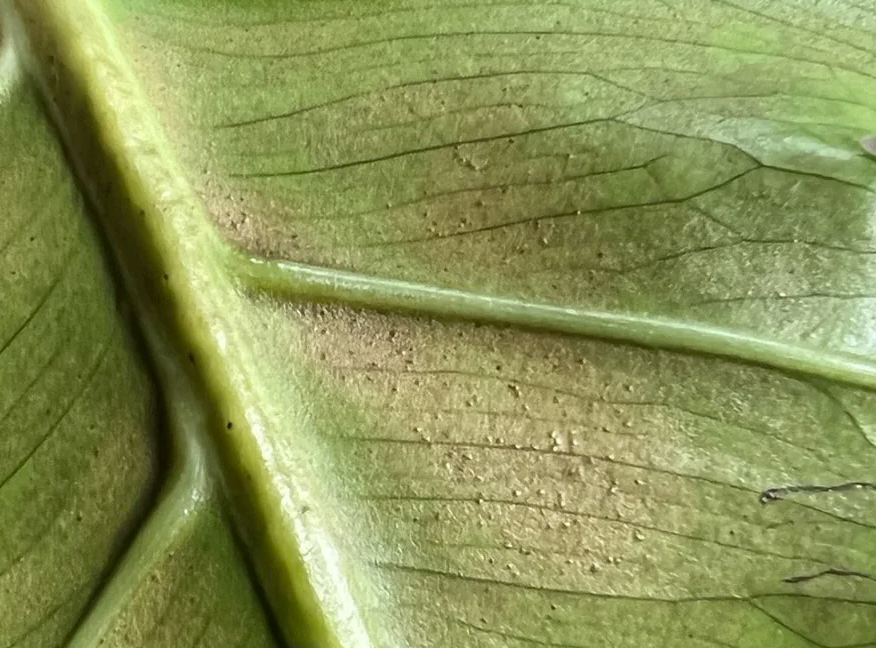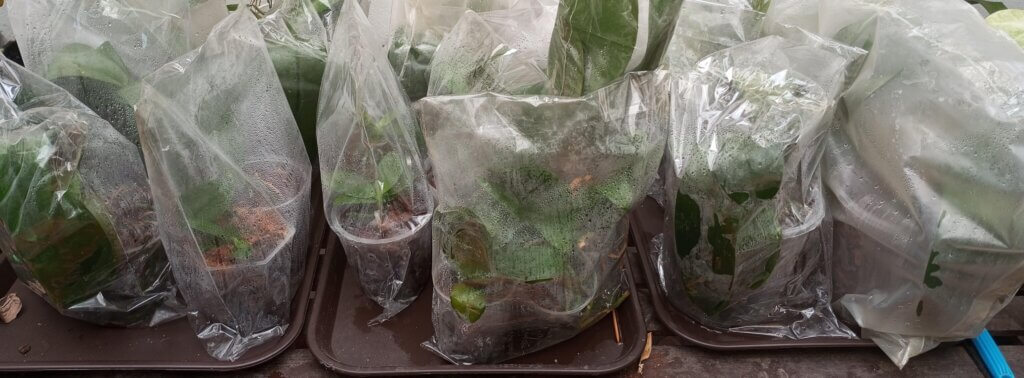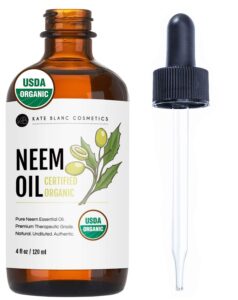Dealing with pests is an inevitable part of gardening, and in semi-hydroponic systems, thrips often top the list of unwelcome guests.
There’s no need to panic though. Let me guide you through understanding thrips: how to spot them and how to effectively eliminate them from your semi-hydroponic setup.

What are Thrips?
Thrips are tiny, slender, and winged, making them a little tricky to spot.
Among the thousands of thrips species, some are actually beneficial as they prey on other pests.
However, many species prefer feasting on your semi-hydroponic plants, whether it is LECA or Pon.
It’s a challenge for amateur semi-hydroponic enthusiasts to differentiate between the beneficial and harmful thrips.
Therefore, it’s wise to act promptly at the first sign of any thrips in your semi-hydroponic garden.
Identifying Thrips in Your Semi-Hydroponic System

Thrips are masters of hide-and-seek, often lurking on the underside of leaves.
They blend in seamlessly and quickly, jumping or flying away at the slightest disturbance.
A fascinating aspect of thrips is their reproductive process.
Female thrips don’t require mating to reproduce and can lay up to 80 eggs. These eggs are deposited in tiny incisions in plant stems, and their hatching time varies from a few days to several months, depending on the ambient temperature.

The Impact of Thrips on Semi-Hydroponic Gardens
Understanding how thrips affect your semi-hydroponic garden is crucial. These tiny pests are not picky eaters – they’ll happily feed on stems, leaves, flowers, and fruits of your plants.
The first signs of thrips damage usually show up as discoloration.
Plants impacted by thrips display white or yellow spots, sometimes developing a silvery sheen.
The harm caused by thrips extends beyond mere cosmetic damage. Their feeding activity can leave plants vulnerable to various bacterial infections and diseases.
Additionally, thrips are known carriers of several plant viruses, like the tomato spotted wilt virus, potentially leading to more serious issues.
Preventing Thrips in Your Hydroponic Garden
Keeping your hydroponic garden clean and debris-free is essential for preventing thrip infestations.
Regular maintenance and cleanliness are your first lines of defense against these pests.
Enclosing your hydroponic setup in a grow tent can be highly effective.
This not only creates a physical barrier against thrips and other pests but also offers additional benefits for controlling the environment around your plants.

My Successful Experiment in Stopping 100% Thrips from My Plant Collection
Shared by u/Rotia
I’m not a plant expert, but I was in a tough spot with thrips invading all my beloved plants – from monsteras and philodendrons to orchids. They were relentlessly attacking the new leaves, and my collection was suffering. Despite using insecticides, the thrips kept coming back, leading me to realize that I needed to tackle their entire growth cycle.
My Innovative Solution
I decided to experiment. My approach was unconventional: I sprayed my plants with insecticide and then completely sealed them in transparent plastic bags. My goal was to prevent the insecticide from evaporating and maintain its effectiveness over several days.
I kept each plant sealed for 5 days, reopened to respray, and then sealed them again for another 5 days.
I did this with around 50 plants.
The Surprising Results
After 10 days, the results were astonishing – I completely eradicated the thrips. I initially thought it was the prolonged insecticide effect, but upon further research and reflection, I realized it was likely due to the high humidity levels inside the bags, which almost reached 100%.
I learned that thrips struggle to survive in such humid conditions, especially when maintained over several days.
Key Observations and Adjustments
- I was careful with the soil moisture; it wasn’t too wet or dry.
- This experiment was specifically on monsteras, philodendrons, and orchids, so I’m unsure how it would work on other plants, like alocasias or succulents, which might not tolerate high humidity.
- It’s been two months since the experiment, and I haven’t seen a single thrip.
- I should note, the ambient temperature during the experiment was around 20 to 30 degrees Celsius, which could have been a contributing factor.
Based on my experience, this method is worth a try if you’re struggling with thrips. But, proceed with caution. Start with one or two plants to see how they react, and don’t cover the plants immediately after watering. While this worked wonders for me, remember that every plant and situation is unique. If you decide to try this, keep a close eye on your plants and adjust as needed.
How to Deal with Thrips from Your Hydroponic Garden
Now, let’s focus on the solutions to a thrip infestation in your semi-hydroponic system. I’ll guide you through various methods to get rid of these pesky intruders.
- Use for Plants: Beneficial for houseplants and indoor plants; can be added to dog shampoo for fur treatment.
- Skin Benefits: Clears blemishes, prevents breakouts, restores moisture, and promotes soft skin; helps calm redness and itchiness.
- Rich Composition: High in essential fatty acids and Vitamin E, ideal for nourishing skin, hair, nails, and dog fur.
Neem Oil
A favorite among hydroponic enthusiasts, neem oil is effective against a variety of pests, including thrips.
It’s simple to use: just mix it with dish soap as per the instructions on the bottle, and spray it on your plants.
Safer Soap
Insecticidal soap is great for tackling smaller infestations of various pests, including thrips.
Safe for use on all parts of the plant, including fruits, it’s a reliable option for gentle yet effective pest control.
- Content: Includes 1500 live ladybugs with guaranteed live delivery.
- Educational Material: Comes with a ladybug educational sheet featuring release tips, rates, fun facts, and FAQs.
- Diet: Ladybugs are predators of various slow-moving insects like Aphids, Moth eggs, Mites, and more.
- Use: Ideal for kids, birthday parties, school projects, and as a natural pest control method.
If you prefer a natural approach without commercial products, consider these predatory insects:
Ladybugs
A familiar and friendly option for many gardeners, ladybugs are effective at controlling thrips. Not only do they help with pest control, but they also add a pleasant visual element to your hydroponic garden.
Neoseiulus Amblyseius Cucumeris (Predatory Mite)
These predatory mites are tiny, translucent, and efficient at attacking thrips by draining their juices. They’re an excellent choice for discreetly managing thrips without a noticeable presence in your garden.
With these strategies, you can effectively tackle a thrip problem in your hydroponic garden, using either commercial products or natural predators.
Wrapping Up
The most crucial step in managing thrips in your hydroponic garden is early detection.
Tackling small infestations early on is much easier and less costly.
Regular checks of your hydroponic setup for thrips and other pests are vital. This proactive approach not only saves you time but also ensures the health and productivity of your garden in the long run.
By staying vigilant and using the right strategies, you can effectively keep thrips at bay and enjoy a thriving hydroponic garden.



